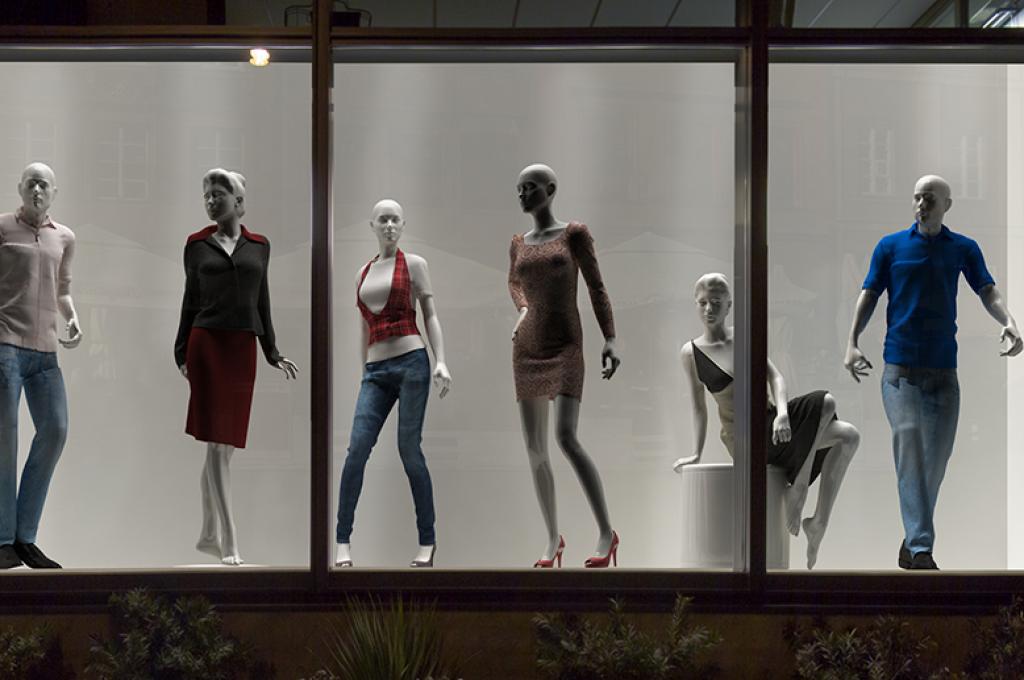If you find yourself frustrated in a crowded mall this holiday season, chances are it’s not only the masses of living, breathing people making your shopping experience unpleasant. It may also be the inanimate ones posing in shop windows — the mannequins — that are throwing you off. That’s especially true if your self-esteem is running low, according to a recent study. It’s one example of what the University of British Columbia’s Darren Dahl’s research has revealed about how consumers make choices and react to their environment.
Consumer behaviour expert Darren Dahl of the University of British Columbia (UBC) co-authored the paper earlier this year in the Journal of Consumer Research. The researchers found that both male and female consumers with lower self-esteem are much more likely to have a negative reaction to clothing on a mannequin than those with higher self-esteem. The issue is with the beauty ideal the life-size dummies represent: when a consumer feels they don’t measure up to that ideal, their view of the product diminishes.
“Mannequins set an overall standard of beauty that cause a reaction in people experiencing lower self-esteem,” says Dahl, who is senior associate dean of UBC’s Sauder School of Business, and a professor in marketing and behavioural science. “The negative feelings derived mean the shopping experience as a whole is a less productive and pleasant experience.”
And because the global apparel industry is valued at over $3 trillion, these feelings could have profound implications for retailers and consumers. Dahl suggests stores use half mannequins instead: they are less expensive and perceived by consumers as less threatening since they don’t reflect society’s idea of perfection.
Mimicking the mall to find out why shoppers do what they do
This is one example of what Dahl’s research, fueled by his decades-long fascination with human behaviour, has revealed about how consumers make choices and react to their environment.
“Consumers are not rational,” he says. “It’s always fun to try to understand why people make the decisions they make.”
Dahl and his research team are well-equipped to answer those questions at the Marketing and Behavioural Science Lab (MBS Lab) at Sauder, where studies are done on everything from how consumers use products in unexpected ways, to advertising to attitudes toward fair trade. The lab features one-way mirrors, PC-connected whiteboards and observation cameras to track test subjects. Having several small rooms and movable furniture allows researchers to create realistic consumer environments, like mock stores, where they can create particular situations and record how study participants respond.
Keeping up with the Joneses
In another recent study, Dahl’s team examined how envy could change a person’s willingness to buy. It turns out, how participants behaved when they wanted something another participant had, like hockey tickets, a first-class flight upgrade or an internship at a fashion house, depended in part on whether or not they felt they also deserved it.
“People with high self-esteem were encouraged to buy when they felt envy for a product or service. In contrast, people experiencing low self-esteem were more likely to reject the product or service after feeling envy,” says Dahl.
He says that because they felt unworthy of the brand, their ego felt threatened, so rejecting the brand made them feel better about themselves. “Envy is an emotion that occurs in the marketplace and shows up in a lot of consumption situations. That is, keeping up with the Joneses. Marketers want us to envy and want what others have,” says Dahl.
But “it is a double-edged sword for consumers and marketers,” he says. If marketers use envy tactics to sell products, they need to consider the self-worth of individuals or they could end up with alienated, soured consumers who don’t buy and potentially damage brand relationships.
Providing needed insight on everything from happiness to sustainability
These kinds of insights have helped position Dahl as a leader in consumer behaviour research.
David Hardisty, director of the MBS Lab and assistant professor of marketing and behavioural science at UBC, says Dahl and others in the lab are “learning more about how consumers make choices, and how to help them make better choices.” He estimates that since the lab opened in 2013, 270 studies have been conducted in the physical space and many hundreds more online. He says this information influences everything from happiness and obesity to spending and saving, sustainability and creativity, and is useful not just to retailers hoping to influence buyers, but also to governments and non-profits who aspire to influence the choices people make.
“First and foremost,” says Dahl, “we’re empowering consumers, so they understand the marketing that’s being thrown at them.” Specifically, the research provides shoppers with “knowledge on why they might be behaving the way they do in the marketplace. And with knowledge comes the ability to be a savvy consumer.”





